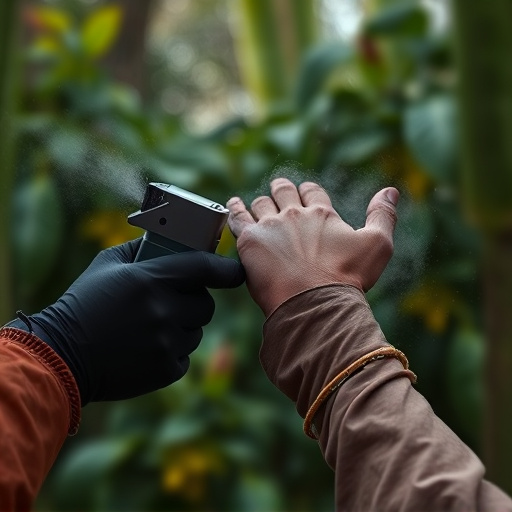Tactical pepper spray, using capsaicin, temporarily disables attackers by impairing vision, breathing, and movement. To neutralize it on the face, create a protective barrier, wash affected areas with water, and avoid direct contact with sensitive areas. Understanding legal implications and proper application techniques, including secure storage and accurate aiming, is crucial for responsible self-defense.
“Tactical pepper spray is a powerful self-defense tool that can provide vital seconds of safety in dangerous situations. Understanding its active ingredients and efficacy is crucial to using it effectively. This guide delves into the mechanics of tactical pepper spray, focusing on neutralizing techniques for pepper spray on the face—a key skill for personal safety. Additionally, we explore legal considerations and safety precautions, empowering individuals with knowledge to protect themselves responsibly.”
- Understanding Tactical Pepper Spray: Active Ingredients and Efficacy
- Correct Application Techniques: Neutralizing Pepper Spray on Face
- Legal Considerations and Safety Precautions for Self-Defense Use
Understanding Tactical Pepper Spray: Active Ingredients and Efficacy
Tactical pepper spray is designed for self-protection, using capsaicin, the active ingredient found in chili peppers, to temporarily neutralize and disable an attacker. When deployed, it creates a burning sensation, limiting an individual’s ability to see, breathe, and move effectively. The primary purpose of tactical pepper spray is to give users precious time to escape or call for help during potentially dangerous situations.
Understanding the ingredients and their effectiveness is crucial when considering its use for self-defense. Unlike common pepper spray used in recreational settings, which often contains higher concentrations of capsaicin, tactical varieties typically have lower concentrations, ensuring it remains potent yet safe for trained individuals to handle. This balance allows users to control and deploy the spray precisely, aiming to neutralize an assailant while minimizing exposure to the eyes and respiratory system.
Correct Application Techniques: Neutralizing Pepper Spray on Face
When it comes to tactical pepper spray for self-protection, understanding the correct application techniques is vital. One of the most crucial skills to master is neutralizing pepper spray on the face. The primary goal is to ensure the spray doesn’t reach your eyes or respiratory system, as direct contact can cause severe irritation and even temporary blindness.
To effectively neutralize pepper spray on your face, start by creating a protective barrier. Tilt your head back slightly and cover your mouth and nose with your palm or a specialized shield. This action blocks much of the spray from entering your lungs and eyes. Then, quickly move to wash the affected areas with plenty of water to dilute and rinse away the pepper spray residue as soon as possible.
Legal Considerations and Safety Precautions for Self-Defense Use
When considering tactical pepper spray as a self-defense tool, it’s crucial to understand the legal implications and safety precautions surrounding its use. Each jurisdiction has specific laws governing the possession and use of pepper spray for self-defense, so it’s essential to research and comply with local regulations.
Before deploying pepper spray, users must be aware of safe handling practices. This includes learning proper application techniques to effectively neutralize pepper spray on the face while minimizing unintended damage. Safety precautions also encompass storing the spray securely to prevent unauthorized access and ensuring it remains within easy reach when needed. Responsible use involves aiming accurately at the attacker’s eyes, nose, or mouth, as these areas are most susceptible to incapacitation without causing long-term harm.
Tactical pepper spray is a powerful tool for self-defense, but understanding its correct application, especially how to neutralize pepper spray on the face, is crucial. By knowing the active ingredients and their efficacy, you can make informed decisions about self-protection. Additionally, being aware of legal considerations and safety precautions ensures responsible use. With the right knowledge, individuals can confidently protect themselves in potentially dangerous situations.
